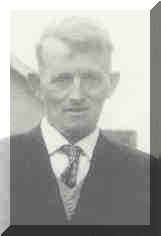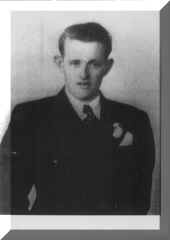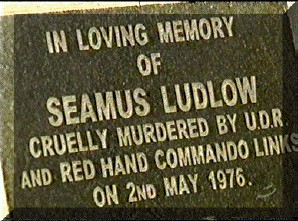The Murder of Seamus Ludlow in County Louth, May 1976. Towards a public inquiry?



The Murder of Seamus Ludlow in County Louth, May 1976. Towards a public inquiry?
|
|
Introduction to the murder of Seamus Ludlow and the official cover-up. Michael Cunningham investigation - 1978 The recent Campaign for Truth and Justice. Irish Victims Commission Report. Ludlow family's questions for the RUC (now the PSNI). Jim J. Kane's letter to the N I Human Rights Commission. Jim J. Kane's letter to the RUC Ludlow Family Letter to Bertie Ahern Other Ludlow Family Sites. |
The Irish News, 24 May 1999: Collusion inquiry ‘to shake Republic’ By
Aeneas Bonner
The Irish government is expected within weeks to announce an inquiry into the 1976 murder of Seamus Ludlow, a 47-year-old forestry worker killed by loyalists outside Dundalk. Aeneas Bonner spoke to one relative about the family’s 23-year campaign for justice, and the far-reaching consequences the strange case of Seamus Ludlow will bring
MAY 1976. A body is found by tourists in a lonely laneway a few miles outside Dundalk, and a murder investigation begins. The body has gunshot wounds to the heart and liver and is identified as Seamus Ludlow, a 47-year-old forestry worker who lived half-a-mile away. Mr Ludlow had last been seen hitchhiking home on the main Newry road out of Dundalk after spending the evening in local pubs. In the days following the discovery, the family are told by local gardai the IRA has killed their brother, amid claims he had been an informer. The IRA investigates and both publicly and privately denies it ever had anything to do with the man, but the stigma lives on and stays with some family members to the grave. A Garda investigation gets under way, but is apparently suspended after only three weeks. The inquest into the death also takes place without any family members, who apparently “could not be contacted” in time for the hearing. May 1999. Twenty-three long years have passed since the murder of Seamus Ludlow and a campaign by the remaining family members and human rights groups finally appears to have borne fruit. Government officials are so far refusing to comment, but Garda sources have confirmed an announcement of an inquiry into the murder of Seamus Ludlow is imminent. It is not yet known how extensive the inquiry will be, but the family hopes it can answer a range of questions which for 23 years have haunted, frustrated, confused and almost tore it apart. Only in the last two years has new information emerged implicating a group of four loyalists in the murder, naming two UDR men among a group of Red Hand Commando members. They had met in a northern bar, driven across the border, picked up Seamus Ludlow near Dundalk, shot him three times and dumped his body. The information is based on evidence by one of the men in the car that night, who has spoken to journalists and police and signed a five-page statement for the family although he claims personally to have taken no part in the murder. The men were questioned by the RUC last year with the file sent to the DPP on October 23. A decision on whether to charge the men is now long overdue. But the family do not believe a court case will reveal the full truth about what happened to Seamus Ludlow. They demand that the Garda and RUC be held fully accountable for their actions over the last 23 years. Michael Donegan, Seamus Ludlow’s nephew, said yesterday it is crucial the inquiry is not limited to certain time periods or issues, thus avoiding awkward questions for the Garda and Irish government. In particular, he wants to know what these four people were doing in Dundalk on May 1 1976; whether they were they acting with the knowledge of authorities north and south; and why there was no Garda border checkpoint at the time. He wants to know whether a UDR or British army weapon was used in the murder and why ballistic details were not discussed in the inquest. More distressingly, he wants to know why gardai embarked on a 20-year policy of “going out of their way to blacken my uncle’s name”. “They made him look despicable in his community in an attempt to set one section of family against the other so that they wouldn’t realise what was going on above heads,” he said. “My father went to the grave believing what the gardai told him. He had been 17 years in the Irish army and believed in the system of authority. It was not his fault he was exploited by the Garda.” Mr Donegan said the majority of the last 23 years had been a “very lonely time” for the family, who were offered no counselling following the death and met no government representatives at the funeral. “For 20 years it looked like we would never get to the truth. We kept hearing references to a man killed in Dundalk by the IRA in various books, and this was very offensive to the family,” he said. “We knew him as a very simple, gentle and kind man, who was very involved in charitable activities in Dundalk, and was adored by his family and community. “But because he was a single man it was easy for the authorities to blacken his name. He had no close family to represent him, he was the ideal victim for a smear campaign. “We felt we had a duty to defend him, and to defend ourselves because some of the gardai also implicated us in the murder. It is clear they knew what really happened all along, and I find that despicable.” The explosive impact the Ludlow inquiry will have on the Republic has already been compared to that of murdered black teenager Stephen Lawrence in England. An inquiry is also certain to raise questions about other murders in the 1970s and focus attention on the scale of Garda and British security force collusion during that period. Jane Winter of British-Irish Rights Watch, who has delivered a report on the murder to Bertie Ahern and wrote last week with her views on an inquiry, described the news as a “momentous step forward for the Republic”. But like Michael Donegan, she says the inquiry is the least the family now deserves, and must be the “right sort of inquiry” to fully answer all their suspicions. Mr Donegan said: “I have a feeling the Irish government are afraid to answer questions about 1976 because it means potentially very damaging revelations about the government, not just the Garda. “This case could open up a lot of other cases. We’re only one family crying out for justice, and in a sense we have been very fortunate. “We’re making outrageous claims against the Garda that they colluded in and covered up a murder, and that they compounded this by blackening the victim’s name. “There have been millions spent on tribunals about money and sex in the Republic, but this will really shake people’s faith in the Garda, and will make an overwhelming argument for reopening a number of other cases.” “If we achieve nothing else here, we will have restored a good man’s name. The lies and liars and cover-ups will have been exposed, and though we can’t bring Seamus back to life, to a large extent we can honour his memory.”
I Homepage I Top I Press Coverage I |